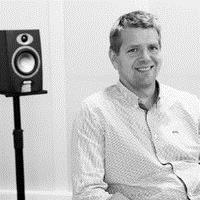 Position
Position
Program Manager A&A – Clinician and Research Tools
Cochlear Ltd.
Role in MOSAICS
Industrial promotor and supervisor of ESR 4
Background
- Audiology
- Clinical trials
- Fitting of cochlear implants
- Signal processing
- Electrophysiology
- Medical device technology
- Innovation management
Bas has been working in Cochlear Implants for the last 23 years of which 19 years for Cochlear. Within Cochlear he has driven a wide range of research projects in the area of electrophysiology, fitting, and signal processing. He has experience in multiple national and EU funded projects (ICanHear, Audis, Hearcom, TinAct) as PhD supervisor. His expertise also lies in bringing research outcomes into product development.
Selected Publications
- Buyens W, van Dijk B, Moonen M, Wouters J., Evaluation of a Stereo Music Preprocessing Scheme for Cochlear Implant Users. J Am Acad Audiol. 2018 Jan;29(1):35-43. doi: 10.3766/jaaa.16103.
- Spirrov D, van Dijk B, Francart T. Optimal gain control step sizes for bimodal stimulation. Int J Audiol. 2018 Mar;57(3):184-193. doi: 10.1080/14992027.2017.1403655. Epub 2017 Nov 24.
- Goehring T, Bolner F, Monaghan JJ, van Dijk B, Zarowski A, Bleeck S. Speech enhancement based on neural networks improves speech intelligibility in noise for cochlearimplant users.
- Theelen-van den Hoek FL, Boymans M, van Dijk B, Dreschler WA. Adjustments of the amplitude mapping function: Sensitivity of cochlear implant users and effects on subjective preference and speech recognition.
- Buyens W, van Dijk B, Wouters J, Moonen M. A Stereo Music Preprocessing Scheme for Cochlear Implant Users. IEEE Trans Biomed Eng. 2015 Oct;62(10):2434-42. doi: 10.1109/TBME.2015.2428999. Epub 2015 May 8.
- Qazi OU, van Dijk B, Moonen M, Wouters J. Understanding the effect of noise on electrical stimulation sequences in cochlear implants and its impact on speech intelligibility. Hear Res. 2013 May;299:79-87. doi: 10.1016/j.heares.2013.01.018. Epub 2013 Feb 8.
- Qazi Ou, van Dijk B, Moonen M, Wouters J. Speech understanding performance of cochlear implant subjects using time-frequency masking-based noise reduction.
